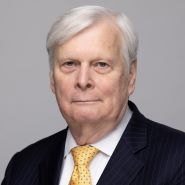Bioisosterism, by Itself, May Not be Sufficient Motivation to Modify a Lead Compound
- February 11, 2019
- Article
Associated People
Associated Practices
Associated Technologies
In the recent decision, Mylan Pharmaceuticals Inc. v. Research Corporation Technologies, Inc., the Federal Circuit affirmed the PTAB’s finding that Claims 8 to 13 of U.S. Reissue Patent 38,551 (“the ’551 patent”) owned by Research Corporation Technologies, Inc. (“RCT”) are not unpatentable. Claim 8 of the ‘551 patent is directed toward (R)-N-benzyl-2-acetamido-3- methoxypropionamide (“BAMP”) of the following formula:
 ,
,
which is useful in the treatment of, inter alia, epilepsy.
In the IPR filed by Argentum Pharmaceuticals LLC (“argentum”), the PTAB instituted two grounds: (1) obviousness of Claims 1 to 9 over Kohn 1991 and Silverman and (2) obviousness of Claims 10 to 13 over Kohn 1991, Silverman, and U.S. Patent 5,378,729 (“the ’729 patent”). Argentum relied on Kohn 1991 for disclosure of compound 31, which it asserted to be a lead compound:
 .
.
As can be seen, the compound of Claim 8 differs from compound 31 in the replacement of an
-NH- group with an -CH2- group, i.e., replacement of the methoxyamino moiety with a methoxymethyl moiety.
Argentum also relied on Silverman, which describes bioisosterism as a “lead modification approach . . . useful to attenuate toxicity or to modify . . . activity.” Silverman defines bioisosteres as “substituents or groups that have chemical or physical similarities, and
which produce broadly similar biological properties.” Silverman also discloses that “classical isosteres” are groups with the same number of valence electrons but potentially different atoms, and identifies -NH- and -CH2- as classical isosteres.
Petitioners asserted that it would have been obvious to modify the methoxyamino group of compound 31 in Kohn 1991 because: (1) the methoxyamino group is not common in commercial pharmaceutical compounds and (2) the methoxyamino group could present synthetic and stability problems. Petitioners also argued that a person of skill in the art would have been motivated to substitute the -NH- group in compound 31 with a -CH2- group because: (1) it is more common and acceptable and (2) Kohn 1991 disclosed a ten-fold higher activity for 31, which has a group of -NH(OCH3), over a compound with a group of -NH2.
In its final written decision, the PTAB assumed arguendo, that one of skill in the art would have selected compound 31 of Kohn 1991 as a lead compound but found that it would have been undesirable to convert the methoxyamino group because (1) the compounds in Kohn 1991 without a methoxyamino or nitrogen-containing moiety had reduced activity, (2) an ordinary artisan would have understood the methoxyamino group to confer significant biological activity, and (3) substitution of nitrogen by carbon would have led to a significantly different conformation and biological activity. The PTAB also found there was no “specific evidence suggesting an ordinary artisan would have understood that modifying the methoxyamino group of Kohn 1991’s compound 31 would have reduced that compound’s toxicity.”
In affirming the PTAB, the Federal Circuit also assumed for the purposes of its decision that compound 31 was an appropriate lead compound. However, the Federal Circuit also found that the PTAB’s decision that one of skill in the art would not have been motivated to convert the methoxyamino group of compound 31 of Kohn 1991 to the methoxymethyl group of BAMP was supported by substantial evidence. Specifically, the Federal Circuit found that there was evidence suggesting that (1) compounds without a methoxyamino or nitrogen-containing group at the α carbon had reduced activity (2) replacing the methoxyamino in compound 31 would have yielded a different conformation which could have affected interaction with receptors and, thus, altered biological activity. Lastly, the Federal Circuit also stated that the PTAB was:
entitled to reject bioisosterism as a basis for a motivation to modify compound 31. While Silverman does disclose that that bioisosterism may be useful to attenuate toxicity in a lead compound, the record does not indicate why bioisosterism would have been used to modify compound 31 in particular, which already had a high potency and low toxicity, and why methylene was a natural isostere of methoxyamino.
It would appear that this decision will be useful in overcoming rejections based on the concept of bioisosterism.
Recent Publications
5 IP Rules to Know to Protect Your Business in the United States (article in French)
Coaching INPI Newsletter










 Counseling & Strategic Advice
Counseling & Strategic Advice IP Transactions
IP Transactions Litigation
Litigation PTAB Proceedings
PTAB Proceedings Start-Up
Start-Up Technology Transfer
Technology Transfer Trademark & Designs
Trademark & Designs U.S. Patent Procurement (Application Drafting & Prosecution)
U.S. Patent Procurement (Application Drafting & Prosecution)








